Crucial BX100 (120GB, 250GB, 500GB & 1TB) SSD Review
by Kristian Vättö on April 10, 2015 1:20 PM EST- Posted in
- Storage
- SSDs
- Crucial
- Micron
- Silicon Motion
- BX100
- SM2246EN
- Micron 16nm
Sequential Read Performance
For full details of how we conduct our Iometer tests, please refer to this article.
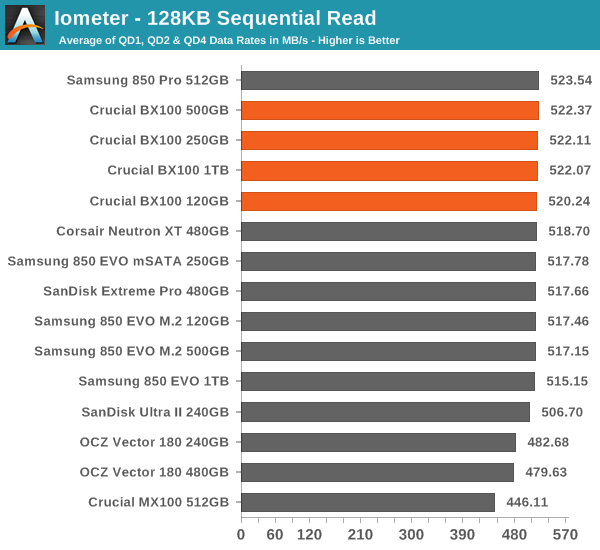
Sequential read performance for all modern SATA 6Gbps is more or less the same, and the BX100 is no exception.
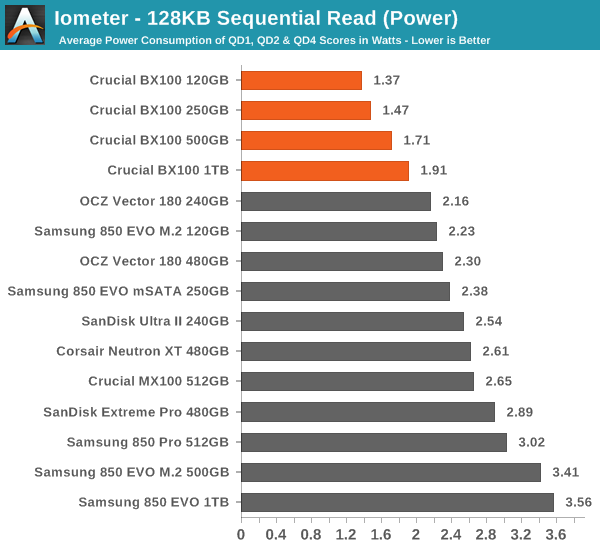
But power consumption presents large differences, which are in favor of the BX100.
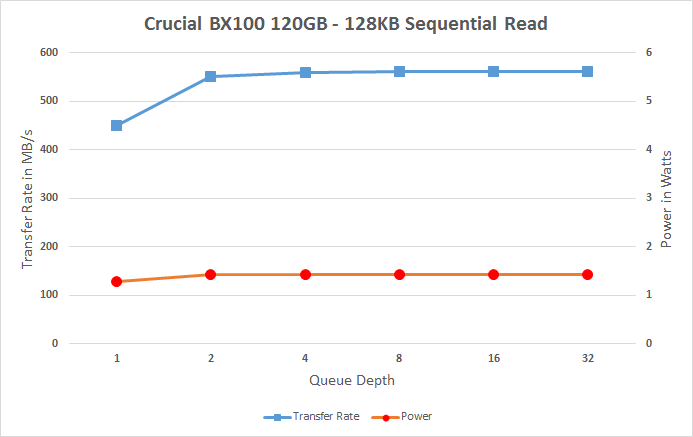 |
|||||||||
Sequential Write Performance
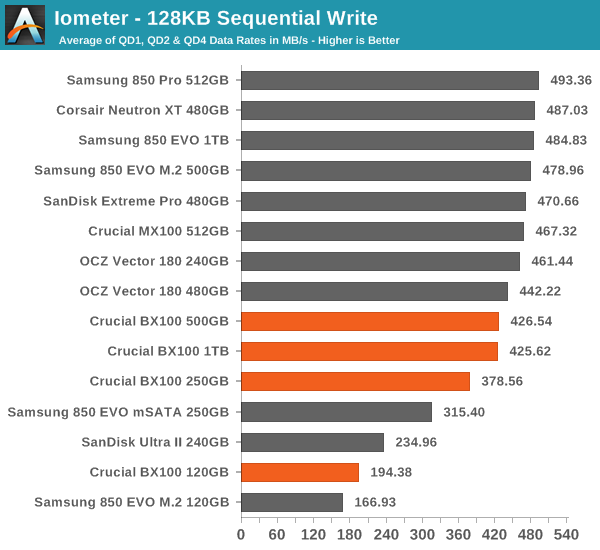
Compared with other value drives, namely 850 EVO and Ultra II, the BX100 performs relatively well, although the SM2246EN seems to hit its maximum speed faster than the others as the performance doesn't scale much with 500GB and higher.
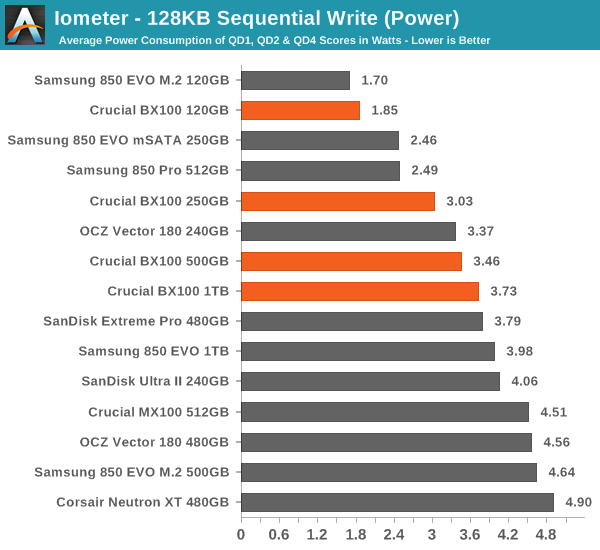
Power efficiency is still very good, though.
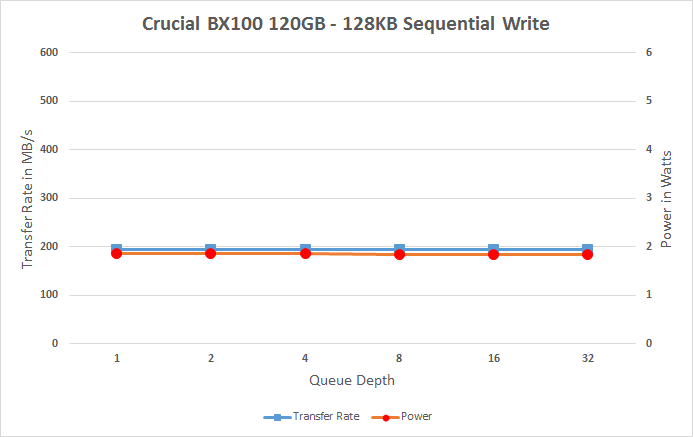 |
|||||||||
Looking at the scaling shows why the BX100 can't match the others as it maxes out at 450MB/s (which is also the rated sequential write speed).










67 Comments
View All Comments
Kristian Vättö - Saturday, April 11, 2015 - link
We've run some basic tests, but nothing too in-depth for the review. Testing an internal drive is a bit more complicated, but hopefully we'll be able to follow up with more thorough testing once we get the initial review out.repoman27 - Saturday, April 11, 2015 - link
Especially when it's not just internal but full on embedded. We may need to wait for an iFixit or Chipworks teardown to get a better picture of how this is implemented.zodiacfml - Saturday, April 11, 2015 - link
I'd take the Samsung with longer warranty and fat pixels... i mean, NAND. The 250GB version has more DRAM compared to the BX100 if that is any useful.Random read/write is what differentiates these great products.
zodiacfml - Saturday, April 11, 2015 - link
Speaking of random performance, isn't the random read results swapped with the random write chart?digiguy - Friday, April 10, 2015 - link
Agree with Christian, the limitations of SATA 6GB hardly justify an SSD like the 850 pro or the Extreme pro (which I have), especially with PCIe virtually here (tough still rare in laptops). Something like this SSD (or the MX100 which I also have is perfectly adequate even for enthusiasts). I even wonder how many years the SATA interface will survive... I suspect that in 10 years SATA SSDs might well be a thing of the past... (especially in the 2.5 inches format...).CaedenV - Friday, April 10, 2015 - link
I think it depends on the use. I would imagine that SSDs are going to transition to M.2 or embedded options as the primary interface. However, I think that SATA, even SATA3, has a very long life ahead as a traditional HDD interface for bulk storage. My bet is that we will see 1-2 M.2 connectors for system drive SSDs, and continue to see 2-4 SATA connectors with RAID support for HDD installs for a very long time. They simply do not cost much, and they don't take a lot of space, so it will sort of be like how PS/2 ports keep showing up even though practically nobody uses them, or how parallel ports hung on a good 10 years after they were useful.Murloc - Saturday, April 11, 2015 - link
kb-0133s never die, and so neither does PS/2.lordken - Sunday, April 12, 2015 - link
I do use PS/2, as long as my old M$ multimedia keyboard is going to live...no reason to buy new usb keyboard only because this one is like 10y old :)Also using good old mx518 (which is usb ofc)
Jaybus - Thursday, April 16, 2015 - link
I don't think multiple M.2 connections will be likely. A single M.2 is great for small form factors, but it takes up too much board space.Pissedoffyouth - Friday, April 10, 2015 - link
Awesoem stuff. I have an mSata m500 and its been flawless, unlike the bad performance I've had with samsung 840's.Looks like this is the drive to recommend to people, I might even get myself one of the 250gb as portable drive